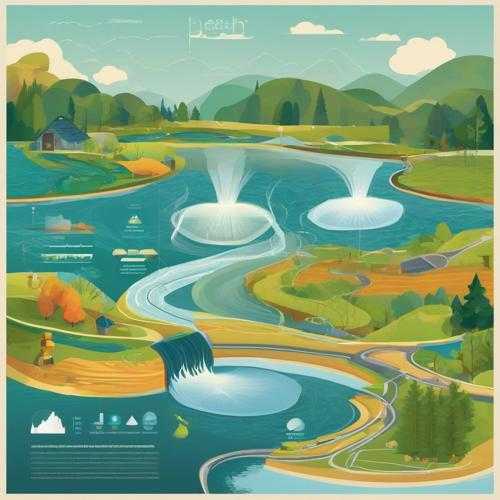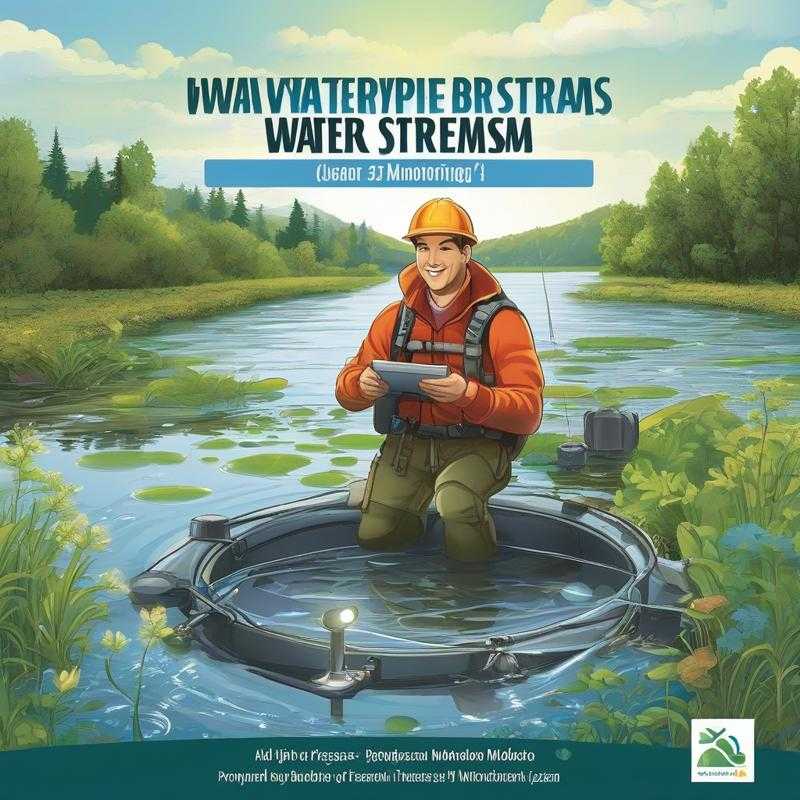Table of Contents

A vízszint és vízfolyások monitorozásának jelentősége
The monitoring of water levels and flow rates is crucial for understanding the state of water systems and detecting changes in water levels. This process is essential for water management, as it enables the identification of potential issues and the implementation of measures to prevent or mitigate their effects.
The importance of monitoring water levels and flow rates lies in its ability to provide real-time data on the state of water systems. This information is vital for making informed decisions about water management, as it allows for the identification of areas where water levels are rising or falling, and the implementation of measures to address these changes.
Furthermore, monitoring water levels and flow rates is essential for environmental protection. Changes in water levels can have significant impacts on ecosystems, and monitoring these changes allows for the implementation of measures to mitigate these effects.
A vízszint és vízfolyások monitorozásának célja
The goal of monitoring water levels and flow rates is to understand the state of water systems and detect changes in water levels. This involves the collection and analysis of data on water levels and flow rates, as well as the identification of trends and patterns in this data.
The monitoring of water levels and flow rates is a critical component of water management, as it enables the identification of potential issues and the implementation of measures to prevent or mitigate their effects.
A vízszint és vízfolyások monitorozásának előnyei
The benefits of monitoring water levels and flow rates are numerous. Firstly, it enables the identification of potential issues and the implementation of measures to prevent or mitigate their effects. This can help to prevent flooding, drought, and other water-related disasters.
Secondly, monitoring water levels and flow rates is essential for environmental protection. Changes in water levels can have significant impacts on ecosystems, and monitoring these changes allows for the implementation of measures to mitigate these effects.
Thirdly, monitoring water levels and flow rates is critical for water management, as it enables the identification of areas where water levels are rising or falling, and the implementation of measures to address these changes.
A vízszint és vízfolyások monitorozásának jelentősége a vízgazdálkodásban
The importance of monitoring water levels and flow rates in water management cannot be overstated. It enables the identification of potential issues and the implementation of measures to prevent or mitigate their effects.
Furthermore, monitoring water levels and flow rates is essential for understanding the state of water systems and detecting changes in water levels. This information is vital for making informed decisions about water management, as it allows for the identification of areas where water levels are rising or falling, and the implementation of measures to address these changes.
„Water is the driving force of all nature.” – Leonardo da Vinci

A vízszint és vízfolyások monitorozásának módszerei
The monitoring of water levels and flow rates is a crucial aspect of water management. The methods used for this purpose are diverse and have evolved over time. In this chapter, we will explore the various methods used for monitoring water levels and flow rates, including traditional and modern approaches.
A vízszint mérése
Measuring water levels is a fundamental aspect of water management. This involves the use of various instruments and techniques to determine the height of the water surface. Traditional methods include the use of staff gauges, which involve reading the water level from a graduated staff. Modern approaches include the use of automated systems, such as radar and ultrasonic sensors, which provide accurate and real-time data.
In addition to these methods, other techniques are also used, such as the use of floats and pressure sensors. Floats are used to measure the water level by detecting changes in the water surface, while pressure sensors measure the pressure exerted by the water column. These methods are often used in conjunction with each other to provide a comprehensive understanding of water levels.
A vízfolyások mérése
Measuring flow rates is another critical aspect of water management. This involves the use of various instruments and techniques to determine the volume of water flowing through a given point. Traditional methods include the use of current meters, which involve measuring the velocity of the water flow. Modern approaches include the use of acoustic Doppler current profilers, which provide accurate and real-time data.
In addition to these methods, other techniques are also used, such as the use of weirs and flumes. Weirs are used to measure the flow rate by detecting changes in the water level, while flumes are used to measure the flow rate by detecting changes in the water velocity. These methods are often used in conjunction with each other to provide a comprehensive understanding of flow rates.
A vízszint és vízfolyások monitorozásának automatizált rendszerei
Automated systems play a crucial role in the monitoring of water levels and flow rates. These systems use advanced technologies, such as sensors and software, to provide accurate and real-time data. Automated systems can be used to monitor water levels and flow rates in real-time, allowing for quick response to changes in the water system.
In addition to providing real-time data, automated systems can also be used to analyze and interpret the data, providing insights into the behavior of the water system. This can be used to identify trends and patterns, and to make predictions about future changes in the water system.
„The use of automated systems for monitoring water levels and flow rates is essential for effective water management. These systems provide accurate and real-time data, allowing for quick response to changes in the water system.” – Water Management Expert
Questions/Answers: Myths or Reality?
There are many myths and misconceptions surrounding the monitoring of water levels and flow rates. One common myth is that traditional methods are no longer effective in modern water management. However, this is not the case. Traditional methods, such as staff gauges and current meters, are still widely used and provide accurate data.
Another myth is that automated systems are too expensive and complex for small-scale water management. However, this is not the case. Automated systems can be tailored to meet the needs of small-scale water management, and can provide cost-effective solutions.

A vízszint és vízfolyások monitorozásának eszközei
A vízszint és vízfolyások monitorozásának eszközei kulcsszerepet játszanak a vízrendszer állapotának figyelemmel kísérésében. Ezek az eszközök lehetővé teszik a vízszint és vízfolyások pontos mérését, valamint a vízrendszer állapotának elemzését. A vízszint és vízfolyások monitorozásának eszközei közé tartoznak a vízszint mérőeszközök, a vízfolyások mérőeszközök és a szoftveres eszközök.
A vízszint mérőeszközök
A vízszint mérőeszközök a vízrendszer állapotának figyelemmel kíséréséhez szükségesek. Ezek az eszközök lehetővé teszik a vízszint pontos mérését, valamint a vízrendszer állapotának elemzését. A vízszint mérőeszközök közé tartoznak a vízszintmérők, a vízszint-érzékelők és a vízszint-adatgyűjtők.
A vízszintmérők a vízszint pontos mérését végzik. Ezek az eszközök lehetővé teszik a vízszint változásainak észlelését, valamint a vízrendszer állapotának elemzését. A vízszint-érzékelők a vízszint változásait érzékelik, és jelzik a vízrendszer állapotának változásait. A vízszint-adatgyűjtők a vízszint adatait gyűjtik és elemzik, hogy a vízrendszer állapotának elemzését végezzék.
A vízfolyások mérőeszközök
A vízfolyások mérőeszközök a vízfolyások pontos mérését végzik. Ezek az eszközök lehetővé teszik a vízfolyások változásainak észlelését, valamint a vízrendszer állapotának elemzését. A vízfolyások mérőeszközök közé tartoznak a vízfolyás-mérők, a vízfolyás-érzékelők és a vízfolyás-adatgyűjtők.
A vízfolyás-mérők a vízfolyások pontos mérését végzik. Ezek az eszközök lehetővé teszik a vízfolyások változásainak észlelését, valamint a vízrendszer állapotának elemzését. A vízfolyás-érzékelők a vízfolyások változásait érzékelik, és jelzik a vízrendszer állapotának változásait. A vízfolyás-adatgyűjtők a vízfolyások adatait gyűjtik és elemzik, hogy a vízrendszer állapotának elemzését végezzék.
A vízszint és vízfolyások monitorozásának szoftveres eszközei
A vízszint és vízfolyások monitorozásának szoftveres eszközei a vízrendszer állapotának figyelemmel kíséréséhez szükségesek. Ezek az eszközök lehetővé teszik a vízszint és vízfolyások pontos mérését, valamint a vízrendszer állapotának elemzését. A vízszint és vízfolyások monitorozásának szoftveres eszközei közé tartoznak a vízszint-szoftverek, a vízfolyás-szoftverek és a vízrendszer-szoftverek.
A vízszint-szoftverek a vízszint pontos mérését végzik, és lehetővé teszik a vízrendszer állapotának elemzését. A vízfolyás-szoftverek a vízfolyások pontos mérését végzik, és lehetővé teszik a vízrendszer állapotának elemzését. A vízrendszer-szoftverek a vízrendszer állapotának elemzését végzik, és lehetővé teszik a vízrendszer állapotának figyelemmel kísérését.
„A vízszint és vízfolyások monitorozásának eszközei kulcsszerepet játszanak a vízrendszer állapotának figyelemmel kísérésében.”

A vízszint és vízfolyások monitorozásának alkalmazásai
The monitoring of water levels and flow rates has numerous applications in various fields, including water management, environmental protection, and water utility services. In this chapter, we will explore the different applications of water level and flow rate monitoring, highlighting their significance and benefits.
A vízszint és vízfolyások monitorozásának alkalmazásai a vízgazdálkodásban
In water management, the monitoring of water levels and flow rates is crucial for ensuring the efficient use of water resources. By tracking changes in water levels and flow rates, water managers can identify areas of inefficiency and take corrective measures to optimize water distribution. This can lead to significant savings in water and energy consumption, reducing the environmental impact of water management practices.
Moreover, water level and flow rate monitoring can help water managers predict and prevent water-related disasters, such as floods and droughts. By analyzing historical data and real-time monitoring data, water managers can identify patterns and trends that can help them make informed decisions about water resource management.
In addition, water level and flow rate monitoring can help water managers optimize water treatment and supply systems. By monitoring water levels and flow rates in real-time, water treatment plants can adjust their operations to ensure that water quality meets regulatory standards, reducing the risk of waterborne diseases and improving public health.
A vízszint és vízfolyások monitorozásának alkalmazásai a környezetvédelemben
In environmental protection, the monitoring of water levels and flow rates is essential for preserving aquatic ecosystems and preventing water pollution. By tracking changes in water levels and flow rates, environmental agencies can identify areas of high conservation value and take measures to protect them.
Water level and flow rate monitoring can also help environmental agencies detect and respond to water pollution incidents, such as oil spills or chemical contamination. By analyzing real-time monitoring data, environmental agencies can quickly identify the source and extent of the pollution, enabling them to respond quickly and effectively to minimize environmental damage.
Furthermore, water level and flow rate monitoring can help environmental agencies assess the impact of climate change on aquatic ecosystems. By analyzing long-term trends in water levels and flow rates, environmental agencies can identify areas that are most vulnerable to climate change, enabling them to develop targeted conservation strategies.
A vízszint és vízfolyások monitorozásának alkalmazásai a vízügyi szolgáltatásokban
In water utility services, the monitoring of water levels and flow rates is critical for ensuring the reliable supply of clean water to households and businesses. By tracking changes in water levels and flow rates, water utility companies can identify areas of inefficiency in their distribution networks and take corrective measures to optimize water supply.
Water level and flow rate monitoring can also help water utility companies detect and respond to water main breaks and other infrastructure failures. By analyzing real-time monitoring data, water utility companies can quickly identify the location and extent of the failure, enabling them to respond quickly and effectively to minimize service disruptions.
In addition, water level and flow rate monitoring can help water utility companies optimize their maintenance and repair schedules. By analyzing historical data and real-time monitoring data, water utility companies can identify areas of high maintenance priority, enabling them to allocate resources more effectively and reduce maintenance costs.
„The monitoring of water levels and flow rates is essential for ensuring the efficient use of water resources, preserving aquatic ecosystems, and providing reliable water supply services. By leveraging advanced monitoring technologies and data analytics, we can unlock the full potential of water level and flow rate monitoring, driving innovation and sustainability in the water sector.”

A vízszint és vízfolyások monitorozásának jövője
The monitoring of water levels and flow rates is an essential aspect of water management, and its future is crucial for the sustainable development of our planet. In this chapter, we will explore the future of water level and flow rate monitoring, including its development directions, applications, and challenges.
The Future Development Directions of Water Level and Flow Rate Monitoring
The future of water level and flow rate monitoring is expected to be shaped by advancements in technology, increasing demand for sustainable water management, and the need for more accurate and reliable data. Some of the key development directions include:
- Increased use of IoT and sensor technologies to enhance the accuracy and frequency of water level and flow rate data.
- Development of more advanced and sophisticated data analysis and modeling techniques to improve the predictive capabilities of water level and flow rate monitoring systems.
- Integration of water level and flow rate monitoring with other water management systems, such as flood warning systems and water quality monitoring systems.
- Increased focus on the development of low-cost and low-maintenance monitoring systems for use in developing countries and remote areas.
The Future Applications of Water Level and Flow Rate Monitoring
The future applications of water level and flow rate monitoring are vast and varied, and will play a critical role in addressing the water management challenges of the 21st century. Some of the key applications include:
- Flood warning and management systems, which will enable authorities to provide early warnings and take proactive measures to mitigate the impacts of flooding.
- Water quality monitoring systems, which will enable authorities to monitor and manage water quality in real-time, and take prompt action to address any issues.
- Water resource management systems, which will enable authorities to optimize water resource allocation and reduce waste.
- Climate change mitigation and adaptation strategies, which will enable authorities to develop and implement effective strategies to address the impacts of climate change on water resources.
The Future Challenges of Water Level and Flow Rate Monitoring
Despite the many benefits and opportunities offered by water level and flow rate monitoring, there are also several challenges that need to be addressed. Some of the key challenges include:
- Data quality and accuracy, which can be affected by a range of factors, including sensor accuracy, data transmission errors, and data analysis limitations.
- Data management and integration, which can be complex and time-consuming, particularly in cases where data is collected from multiple sources.
- Cost and funding, which can be a significant barrier to the implementation and maintenance of water level and flow rate monitoring systems.
- Public awareness and education, which are critical for ensuring that the benefits of water level and flow rate monitoring are realized and that the public is engaged and informed.
5 Key Points
- The future of water level and flow rate monitoring is critical for sustainable water management.
- Advances in technology will shape the future of water level and flow rate monitoring.
- Data analysis and modeling will play a key role in enhancing the predictive capabilities of water level and flow rate monitoring systems.
- Integration with other water management systems will enhance the effectiveness of water level and flow rate monitoring.
- Addressing the challenges of water level and flow rate monitoring will require a collaborative and multi-disciplinary approach.




One Comment
Comments are closed.